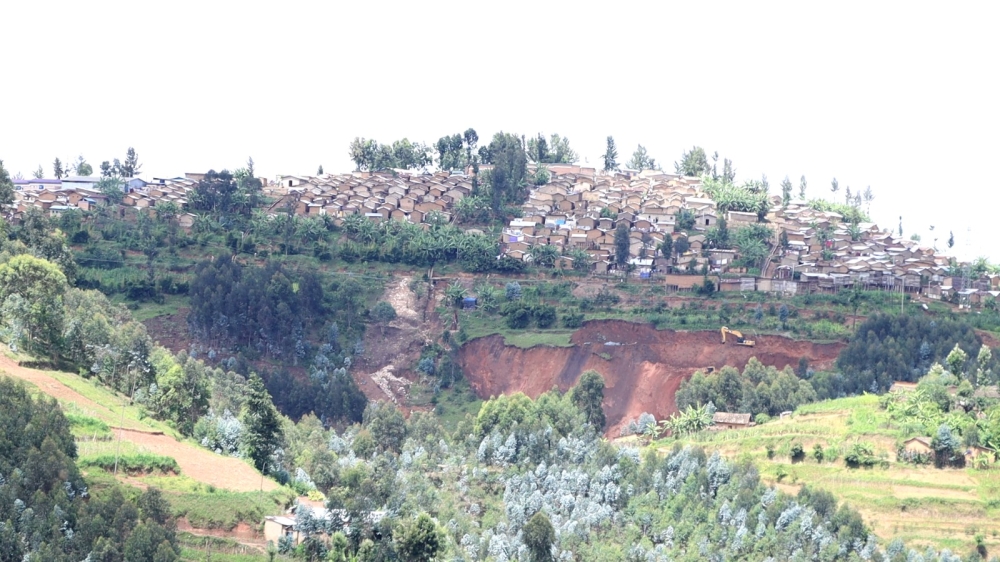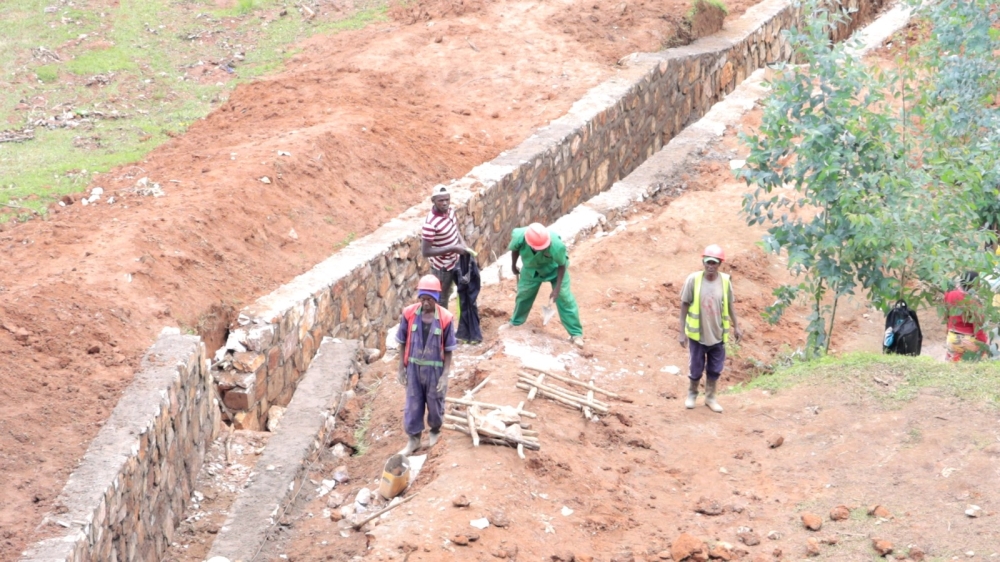

The government has allocated Rwf 9 billion to address the issue of ravines in and around refugee camps, aiming to combat environmental degradation and improve living conditions for refugees and host communities.
In the Kigeme refugee camp in Nyamagabe district, runoff from the camp's infrastructure has caused deep ravines, posing safety risks and threatening local infrastructure.
"One of the ravines destroyed a cemetery in the past, and bodies were sometimes found downhill. Some homes had to be relocated due to the threats of ravines," Etienne Mpamira, a Congolese refugee in Kigeme camp said.
ALSO READ:How-TVET-is-empowering-nyamagabe-refugees


Kigeme refugee camp, situated on two adjacent hills in the southern part of Rwanda, has been home to over 14,000 Congolese refugees since 2012. Heavy rains, linked to climate change, have exacerbated the formation of large ravines in the area.
Apollinaire Uwimana, 47, was digging terraces near a ravine when a small landslide swept him into it, resulting in severe injuries that required a six-month hospital stay.
The Ministry in charge of Emergency Management, through the Jya Mbere Project funded by the World Bank, has designated Rwf 9 billion to rehabilitate 40 ravines in and around refugee camps in Kirehe, Karongi, Gatsibo, Gisagara, Nyamagabe, and Gicumbi districts.
Olivier Uwizeyimana, the site front manager for EGECOR Credo Limited, who oversees the rehabilitation efforts, said: "In the Kigeme refugee camp, five ravines have been identified, with three already fully rehabilitated and the remaining two currently under rehabilitation."
ALSO READ: Gisagara-refugee-students-inspire-local-dropouts-to-return-to-school
Rehabilitation methods include constructing retaining walls, installing water pipes, using gabions, and implementing erosion control measures such as bagging, planting bamboo trees, and grass.
Gonzague Karagire, the SPIU acting coordinator at MINEMA, said: "By addressing environmental issues, we aim to create a resilient and safe environment for both refugees and host community members residing near camps."
Dusabe Bamurange, a refugee, highlighted the economic benefits of the rehabilitation work. "The income I make from working at the site is crucial. We earn monthly wages that help address my family’s needs," she said. Currently, 80 people from both refugee and host communities are involved in the rehabilitation efforts.
Thadee Habimana, Nyamagabe Vice Mayor in Charge of Economic Development, emphasized the urgency of addressing the ravines, which have caused soil erosion and environmental stress.
"For the cemetery, we have advised refugees to use other recommended cemeteries, prohibiting burials in the camp cemetery to prevent further erosion," he said.
Habimana added that all ravine rehabilitation work is expected to be completed by July, after which the district will take over maintenance. He stressed the importance of cooperation between refugees and local authorities in protecting the environment and ensuring community safety.
ALSO READ: How-economic-inclusion-of-refugees-has-improved-livelihoods-self-reliance
Since 2019, a group of 14 refugees and six Rwandans have grown and planted over 37,000 trees in the camp and 26,000 in the host community, including eucalyptus, alnus, and fruit trees, with support from the UNHCR.


